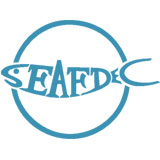Constraints and prospects in aquaculture development.

ရှာဖွေ/ဖွင့်ပါ။
ရက်စွဲ
1987စာရေးသူ
Page views
460
Share
စိတ္တဇ
The development of aquaculture in developing countries of the Asia-Pacific region is constrained by inadequate seeds, diseases and other causes of mortality, lack of effective natural food and formulated feeds, problems associated with technology of culture systems, and lack of knowledge of the breeding biology of culture species. Other problems include inaadequate qualified technicians and skilled labor and high cost of fertilizers, pesticides, pumps, and blowers. All these are only those related with production part of aquaculture. Problems associated with post harvest are also numerous, not to mention financing, socio-economic condition, and local peace and order situation. The problems are aggravated when fish farmers go into semi-intensive and intensive methods of culture.
Applications of endocrinology willhave their greatest impact in enhancing aquaculture development by improving the seed supply. These may be done through induced maturation and spawning, larval rearing, and nursery management. T. J. Lam reviewed the application of endocrinilgy to fish culture in 1982. Hormonal intervention of seed production can result in (1) year round supply of fry, (2) accelereted larval development and metamorphosis, which save on cost of hatchery operation, and (3) production of monosex individuals that are faster growing and which reduce rearing cost. The quantity and quality of seed supply will determine the extent of development, whether by expansion in area by intensification of culture. The present source of seeds in many areas is still largely from the wild which is inadequate, uncertain, and threatened by coastal pollution. M ilkfish farming, for instance, in the Philippines and Indinesia alone covers olny 400,000 hectares but the seeds come entirely from the wild. In 1983 the Asia-Pacific region produced 8.4 million metric tons from aquaculture, and contributed 82% of the total aquaculture production for that year. As the developing countries of the region go into industrialization and coastal pollution is increased, the natural supply of seed will have to depend largely on artificial breeding.
ဖော်ပြချက်
Abstract only.
